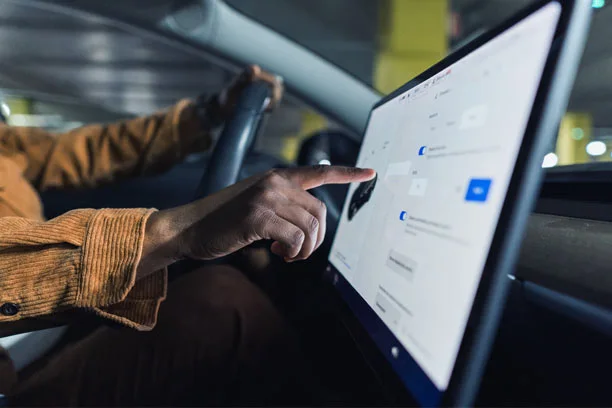5 Must-Have Car Safety Features for Your Next Vehicle


Car technology keeps advancing, and so do car safety features. Every year, safety features in cars get better, and that’s something to consider when you’re wondering if it’s time for a new car. The best auto safety features help protect you, your family and other people on the road. Before you purchase your next car, check out the new safety features in cars listed below — they’re must-haves.
Your blind spot while driving is the area around your car that you can’t quite see — and it can be dangerous, especially to inexperienced or new drivers. That means a blind spot detection or blind spot warning (BSW) feature may be your best friend. By providing either an audible or visual alert, blind spot detectors use sensors and cameras to evaluate the activity around your vehicle. Blind spot detectors are on the job when you activate your turn signal, and they’re in an “always on” mode with a warning light on your side mirrors. This especially comes in handy when you aren’t expecting a zooming car to pass you or when in bumper-to-bumper traffic.
Adaptive Cruise Control (ACC) is a crucial car safety feature that can help with highway driving or when you may not have time to react. With ACC, a vehicle implements defensive driving habits by turning off cruise control when another vehicle is too close. It keeps you within a preset speed limit, detects upcoming bends and turns, and adjusts your speed accordingly. Like blind spot detection, technology on the vehicle consists of cameras and sensors to help drivers drive safely. ACC comes with varying abilities and is customizable in your vehicle’s settings.
Have you ever been distracted in traffic trying to switch lanes, only to suddenly discover that the vehicle in front of you has abruptly hit the brakes? With automatic emergency braking, your vehicle can help detect a potential collision and react with an automatic emergency brake. This tool is especially useful for anyone who regularly encounters stop-and-go traffic or drives during rush hour. You may just avoid a fender bender.
Crunch! That awful sound that comes from bumping into another vehicle in the parking lot, backing over bikes left in the driveway or running into trash cans at the end of the driveway can make your heart drop. With a backup camera, you’re able to avoid parking lot accidents, and most importantly, protect your kids. A rear-view camera also makes parallel parking in a city far easier.
The good news is the U.S. Department of Transportation (DOT) and the National Highway Traffic Safety Administration (NHTSA) implemented a law stating that by May 1, 2018, all cars, SUVs, trucks and vans manufactured are required to have a rear-view visibility system. So, this is now a standard safety feature and tends to be easy to find on the car lot.
Lane keeping assist is a great safety standard to have in a car, especially if you frequently drive at night. With lane keeping assist, you may receive a vibration, sound cue or light cue to signal that you’re going outside of your lane. Simply correct it by returning into your lane. If no action is taken, your vehicle may correct for you until you’re within the lane lines.
Note that if the driver takes over steering while the vehicle tries to correct your position, it will back off, and the driver will resume control. This can help you avoid accidentally drifting into another lane and causing an accident.
The advanced car safety features covered here are available in most newer models. But don’t overlook the most important safety features in a car, especially if you are buying a used vehicle. When car shopping, make sure your vehicle has the following safety systems in good working order.
These vehicle safety features greatly increase your chances of safely driving on the road.
When shopping for a new vehicle, don’t forget to reevaluate your auto insurance. At Farm Bureau, we offer competitive prices and knowledgeable agents to guide you every step of the way.